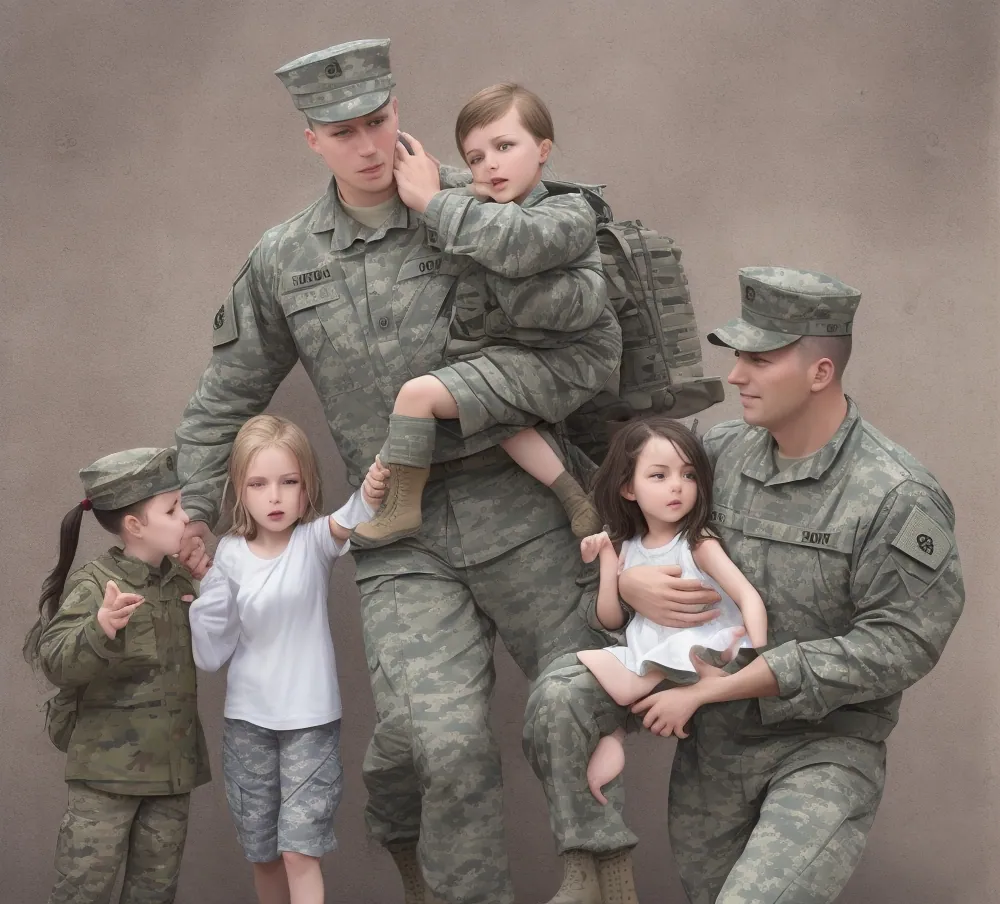Introduction: 51/49 custody military
The dynamics of modern family structures have evolved significantly over the past few decades, with military families facing unique challenges that demand innovative solutions. One such challenge involves child custody arrangements during and after military deployments. As an expert in family law and military affairs, this article will delve into the concept of 51/49 custody division for military families, highlighting its benefits, addressing potential concerns, and advocating for its implementation as a fair and pragmatic approach to custody arrangements.
Understanding the Current Scenario
Military service often requires individuals to be stationed away from their families, sometimes for extended periods. This situation complicates matters when it comes to child custody arrangements, as traditional 50/50 custody division may not always be feasible. The transient nature of military life and the demands of deployment can disrupt children’s routines and relationships with both parents, making a more flexible approach necessary.
The 51/49 Custody Model: A Balanced Approach
The 51/49 custody division involves allocating 51% of custody time to one parent (usually the custodial parent) and 49% to the non-custodial parent. This approach recognizes the unique challenges military families face and aims to strike a balance between maintaining a stable environment for the child and ensuring both parents maintain a meaningful presence in their lives.
Benefits of the 51/49 Custody Model
1. Stability for the Child: Military deployments can be emotionally taxing for children. A 51/49 custody division provides a primary residence, which promotes stability and minimizes disruption during periods of deployment. This consistent environment can contribute positively to a child’s emotional well-being.
2. Flexible Arrangements: Military schedules are often unpredictable, making rigid custody arrangements difficult to maintain. The 51/49 model allows for adjustments in custody time based on the military parent’s availability, ensuring the child’s routine is disrupted as minimally as possible.
3. Maintaining Relationships: Both parents play crucial roles in a child’s development. The 51/49 model ensures that even during deployments, the non-custodial parent remains significantly involved in the child’s life, fostering a strong parent-child bond.
4. Reduced Litigation: The flexibility of the 51/49 model can lead to reduced conflict and litigation compared to traditional custody arrangements, benefiting both parents and, most importantly, the child.
Addressing Concerns
Critics of the 51/49 custody division may raise concerns about potential instability and confusion for the child. However, these concerns can be mitigated through clear and detailed parenting plans that outline responsibilities, communication protocols, and contingency arrangements. Additionally, modern technology allows for virtual interactions between parents and children, bridging geographical gaps and maintaining relationships despite physical distances.
Implementing the 51/49 Custody Model
1. Legal Reforms: Military families deserve a legal framework that recognizes their unique circumstances. Advocacy for legal reforms to incorporate the 51/49 custody model is crucial to ensure the best interests of the child are met.
2. Mediation and Counseling: Mediation and counseling services can help parents navigate the complexities of the 51/49 custody arrangement, fostering effective communication and co-parenting strategies.
3. Education and Awareness: Military personnel and their families should be educated about the benefits and mechanics of the 51/49 custody model. Promoting awareness will lead to greater acceptance and understanding of this innovative approach.
Conclusion
The 51/49 custody division is a compelling solution to the custody challenges faced by military families. It offers a balanced approach that prioritizes stability for the child while recognizing the demands of military service. By implementing legal reforms, providing support services, and promoting awareness, we can ensure that military families have access to a custody arrangement that is both equitable and sensitive to their unique circumstances. The time has come to embrace this pragmatic and compassionate model, ultimately benefiting the well-being of the children who deserve nothing less than the best from both of their parents, regardless of military obligations.
FAQs About the 51/49 Custody Model for Military Families
1. What is the 51/49 custody model?
The 51/49 custody model is a tailored approach for military families, where one parent has 51% custody and the other has 49%, accommodating deployment challenges while maintaining a stable environment for the child.
2. How does it benefit children?
The model prioritizes stability during deployments, fosters strong parent-child relationships, and minimizes conflict between parents, ensuring the child’s well-being.
3. Doesn’t it create instability for the child?
Clear parenting plans and technology help manage potential confusion, maintaining stability even when parents are apart.
4. How does it address military deployment challenges?
The 51/49 model offers flexibility, allowing custody adjustments based on deployment periods, ensuring consistency in the child’s routine.
5. What’s needed to implement this model?
Legal reforms, mediation, counseling, and education efforts are key to successful implementation, recognizing the unique needs of military families.























